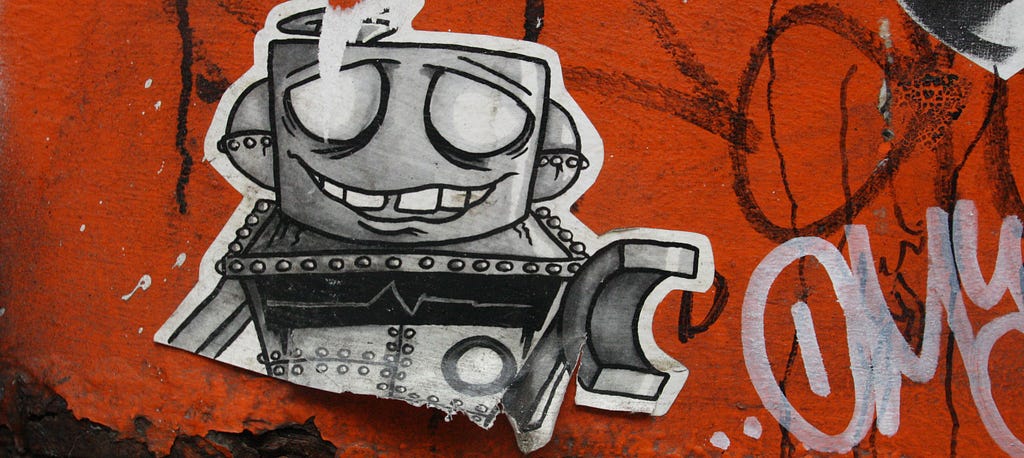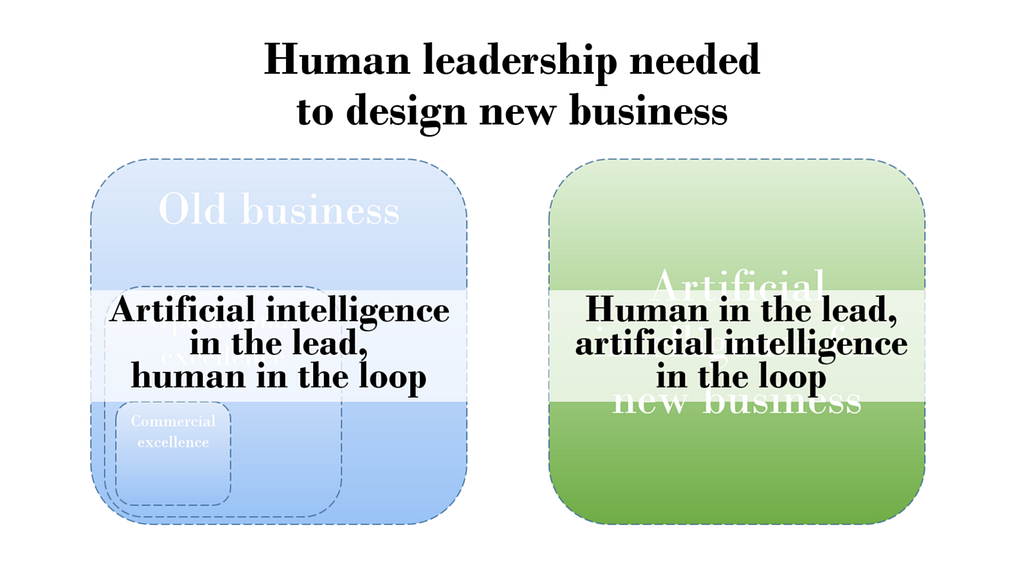Latest news about Bitcoin and all cryptocurrencies. Your daily crypto news habit.
 Photo credit: liborius
Photo credit: liboriusSuperhuman artificial intelligence versus supercomputer humans
A.I. will eat the world, but probably not entrepreneurship itself
That A.I. is able to beat humans in board games is common knowledge by now. How that is relevant to companies is less clear. Normally scientists could be of help here. Clearing up the mess by debunking the hype and showing how trustworthy the technology really is. But many of the good A.I. researchers are connected to big tech companies and these companies have little incentive to debunk a hype when that negatively impacts their share holder value.
As I am not yet hired by one of the big tech companies (you do have my email address, right?) I will do some clearing up for you.
In this post I will argue that:
- Executives should embrace the strategic advantages of superhuman A.I. technologies, knowing what can be automated and what not
- Companies should reposition there human workforce to focus on tasks that require supercomputer qualities
Algorithms can already automate creative tasks (yikes!)
I’ll jump right in it. Last year Kay Hoogland, a master student of our institute, graduated who was wondering whether you can apply data science to a creative task. He did research into the (semi-)automated creation of advertisement product compositions. Let that sink in for a moment…
That’s right. He used an algorithm to create, to design advertisements.
 Kay Hoogland at PyData 2018. Advertisement 1 and 3 are computer generated.
Kay Hoogland at PyData 2018. Advertisement 1 and 3 are computer generated.
True, the advertisements are not that complex. But a creative task, normally done by higly paid professional designers, was automated. In the limited time of his master thesis he made an algorithm that did a better job designing advertisements than designers themselves in over 50% of the cases.
Let that sink in again…
The resulting application co-creates compositions with graphic designers by making use of an evolutionary algorithm with user input. So the current solution is to still involve designers in the decision making process of which advertisement design works best.
This last task could be easily automated as well, if you would let actually click-rate by consumers determine what design works best.
Sink about that.
Now here is the thing. Even though an algorithm does the job better than any human, it will not get the job.
“Even though an algorithm does the job better than any human, it will not get the job”
This lack of trust in computers and what they do is a known issue. Already since the 50s we know that statistical computer predictions outperform clinical human predictions. This means that the implicit expertise of a doctor is no match for a model who uses all available data. But doctors, or humans more generally, do not trust most jobs to computers.
That think their own expertise is somehow more special. While all the data shows it is not.
Here is an unfair advantage if I ever seen one. Trust data, trust algorithms and outperform any competitor, that still relies on human decision making, with ease.
Whatever you do, please start today with embracing A.I.
Go on, give it a hug 🤗.
 From my workshop Designing Intelligent Disruption
From my workshop Designing Intelligent Disruption
The possibilities of A.I. seem endless. They are, of course, not.
The not so endless possibilities of A.I.
A.I. seems to automate playing board games quite good. Within a context of set rules and a very simple world A.I. is winning hard. But how does that translate to business? Boring tasks seem to be automated rather well. Even simple design and copywriting tasks.
But as I have mentioned earlier, we are far away from overcoming the barrier of meaning. A.I. doesn’t get nuance or multiple intrepretations of a situation. There is still an uncanny valley between humans and A.I. Another fundamental problem is understanding causal relations, although it sees patterns and relations in any data, it can’t yet figure out cause and effect.
How speedy the developments will really go is uncertain. And even though the earlier mentioned big tech A.I. researchers are good at creating a big show about fundamental research issues online, these issues will not be tackled any time soon. Until that time it is important to develop a human capital strategy accordingly.
“use real humans for new business & A.I. for existing business”
I began this year with a plea for using new data instead of existing data to create long term value for your company. I am extending that plea with using real humans for new business and A.I. for existing and well known business.
Being an entrepreneur, creating entirely new business; linking a business model to new technology and shifted consumer demands is not a simple task. It requires that you understand the context, see many links that need to connect for success to happen. This is a supercomputer task, something where the most simple human being (shout out to my deskmate 😉) outsmarts even the most advanced algorithm.
To remind the reader, in this post I argued that:
- Executives should embrace the strategic advantages of superhuman A.I. technologies, knowing what can be automated and what not
- Companies should reposition there human workforce to focus on tasks that require supercomputer qualities
Simple tasks that are well defined are being automated fast. So don’t be surprised when your competitor one day seems to have gotten superhuman powers, they probably did.
Humans are still needed in your company. Let them focus on supercomputer tasks, let them be entrepreneurs.
Super human A.I. for business was originally published in Hacker Noon on Medium, where people are continuing the conversation by highlighting and responding to this story.
Disclaimer
The views and opinions expressed in this article are solely those of the authors and do not reflect the views of Bitcoin Insider. Every investment and trading move involves risk - this is especially true for cryptocurrencies given their volatility. We strongly advise our readers to conduct their own research when making a decision.